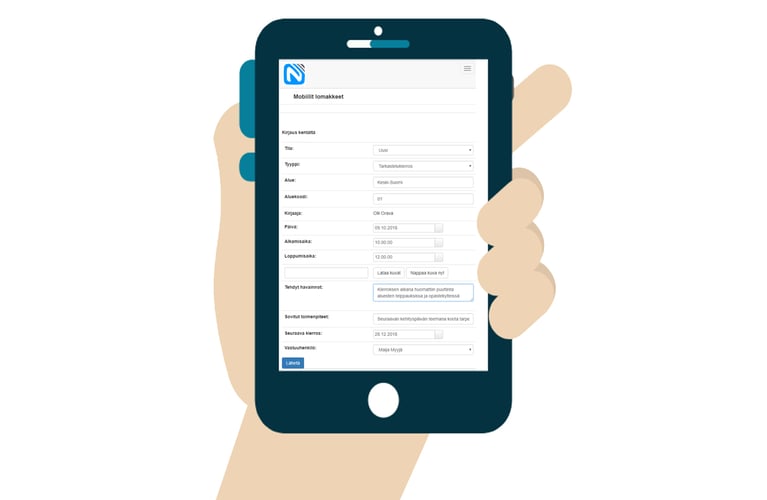
Domino is IBM’s server platform enabling quick and cost-efficient implementation of customised business applications. It offers a secure, fault-tolerant and scalable platform for all types of applications running on both workstations and mobile devices. In many corresponding solutions, multiple servers are needed as an implementation basis: database server, http server, email server, etc. Domino includes all of these.
Domino 10 – benefits of new features
Domino has served its clientele for an unprecedented period, soon 30 years, and has perhaps gained a reputation for being already an old-fashioned solution. The features of the new version 10 released on 9 October in Frankfurt raise Domino’s profile as a modern platform for web and mobile applications. For example, its new features include:
- oAuth, which facilitates integration of user management with other systems. When more and more business software applications are becoming browser-based, this enables easier combination with other sign-in methods.
- Databases as large as 256 GB for storing large amounts of data. An earlier limitation forced to divide large amounts of data into several databases.
- Support for Node.js development, for example, which further increases the web development potential. Domino’s application development has traditionally been very much a world of its own – Node.js support lowers the threshold facilitating joining of new developers.
- Docker support allows almost instantaneous introduction of a Domino container saving time and resources from installation work.
- Applications designed for a Notes workstation run directly on mobile devices, even without an Internet connection. This expands the possibilities of use of particularly the old Notes Client applications.
- Real-time index updating now enables more efficient searches and index updating has no delay as was the case in older versions.
Why Domino?
BM Notes / Domino has been the pioneer in coworking applications already since the 1980s – and applications made at that time are still fully functional today. This is why we have trusted in the platform applying it in dozens of different customer projects. Today, its strengths are particularly the rapid development and the possibility for offline use of applications. Recently, our customers have utilised the Domino platform in the following types of projects:
- Dynamic forms for tablet and web use for a recycling business.
- Browser-based task resourcing tool for healthcare service.
- Workstation applications running without an Internet connection for earth-moving and restauration companies, for example.
- A browser-based intranet solution for a hardware chain store.
For companies who have used Domino earlier, the now released upgrade is a clear message indicating that there are no grounds for abandoning the platform for reasons such as lack of development or outdated technology. For new customers, on the other hand, it is a real option particularly when looking for a quick and ready-made solution.
Mastering the platform still requires specific skills, which can be found in our IBM team. We have provided IBM Domino specialist services already for about 20 years, which means that in addition to today’s latest technologies, we also know the history. Whether you are an old Domino customer or have just become interested in its new potential, check the recording from the release occasion (the link will be provided later on) and see for yourself what it is all about. You can also keep up with the latest developments on the Destination Domino website. If you would like to have further information or support from our team, please contact us – let us release all the benefits from Domino’s new features!
Read more

Venla Junttila
I’m a software developer and expert at Pinja. I have been doing application projects on the Domino platform since 1998. In projects, I’m typically responsible for specifications, development and architecture. In my free time I like to drive my motorcycle, walk my dogs and go to the gym.
Back to the Pinja Blog
Categories
- Pinja Career (67)
- Production development (41)
- Software development (41)
- Business Intelligence (37)
- Digital business (30)
- Circular economy and natural resources (26)
- Sustainability (26)
- Ecommerce (22)
- Digital society (20)
- Industrial digitalization (19)
- Maintenance development (19)
- Supply chain management (19)
- ERP (18)
- ICT services (18)
- Industrial innovation (11)
- Forest industry ERP (9)
- Health and welfare technology (9)
- Lean (4)